What Are the Application Procedures for Importing Oil Mist Collectors from Taiwan?
As global awareness of air quality in industrial environments grows, the demand for effective air filtration solutions like oil mist collectors continues to rise. Taiwan, renowned for its high-quality industrial equipment manufacturing, plays a crucial role in the production of oil mist collectors. If you’re looking to import these devices to enhance your factory’s operations, understanding the necessary application procedures is key. In this article, we will outline the key steps involved in importing oil mist collectors from Taiwan and ensure your business complies with both local regulations and international standards.
1. Identifying the Appropriate Oil Mist Collector Model
The first step in the importation process is to select the appropriate oil mist collector model that suits your industrial needs. Taiwan offers a variety of oil mist collectors designed for different types of machining operations, including CNC machines, EDM, and other industrial equipment. You should carefully assess the specifications, such as filter type, airflow capacity, and compatibility with your machinery. After identifying the right model, contact a reputable supplier or manufacturer in Taiwan who can guide you through the purchase and shipping processes.
2. Verify Compliance with Local Environmental Regulations
Before importing oil mist collectors, it is essential to verify that the equipment complies with your country’s environmental standards. Many countries, including those in the European Union, the United States, and parts of Asia, have specific regulations governing air quality and emissions. For instance, an oil mist collector must meet specific filtration efficiency standards and be equipped with the necessary safety features to ensure it operates efficiently and safely in your work environment.
In some regions, the product may need to undergo certification or testing, ensuring it aligns with local environmental protection standards such as ISO 8573-1 for compressed air purity or similar standards for air filtration systems. It’s advisable to work with the supplier in Taiwan to confirm that the product meets these necessary certifications.
3. Customs Clearance and Import Documentation
Once you’ve chosen your oil mist collector and ensured it complies with local regulations, you need to proceed with the necessary customs paperwork. This includes preparing documents such as:
Commercial Invoice: The invoice from the Taiwan supplier detailing the price, quantity, and description of the goods.
Bill of Lading (BOL): A shipping document that proves ownership and shipment of the goods.
Certificate of Origin: A document that certifies that the oil mist collector was manufactured in Taiwan, which may be required for import duties and tariffs.
Import License: Some countries require an import license for specific types of industrial machinery. Ensure you check with your local customs office for this requirement.
Depending on your country’s import procedures, you may also need to engage a customs broker to assist with the clearance process. They will help ensure that all paperwork is in order and handle any potential issues related to tariffs or taxes.
4. Safety and Installation Considerations
Upon clearing customs, the next step is to focus on installation. The oil mist collector will likely be shipped in parts or as a fully assembled unit. It’s crucial to ensure that the equipment is safely transported to your facility and installed according to the manufacturer’s guidelines.
In addition to installation, you should consider the operational environment. Some oil mist collectors may require specific room conditions, such as proper ventilation or temperature regulation, to function efficiently. The Taiwan-based manufacturer can offer technical support to assist in setting up the system for optimal performance.
5. Warranty and After-Sales Support
Taiwanese manufacturers often provide warranties on their oil mist collectors, offering peace of mind regarding repairs and maintenance. It’s essential to check the terms of the warranty and ensure that local support is available for any potential service needs. Taiwan-based companies are typically very responsive to international customers and can offer technical support and maintenance services to ensure the continued efficiency of your oil mist collector.
Some suppliers may even offer training for your staff to help them understand how to operate and maintain the equipment, ensuring longevity and optimal performance.
6. Understanding Import Taxes and Tariffs
Finally, one of the most important aspects to consider when importing oil mist collectors from Taiwan is the import taxes and tariffs imposed by your country. These fees can significantly impact the overall cost of importing, so it’s essential to research and understand the import duties that will be applied to the equipment.
Many countries have free trade agreements with Taiwan, which could potentially reduce tariffs. It’s advisable to consult with a local customs expert to help you calculate the exact cost of import duties based on the value of the oil mist collectors being imported.
Conclusion
Importing oil mist collectors from Taiwan involves several important steps, including selecting the right model, ensuring compliance with environmental regulations, handling customs clearance, and understanding the costs and documentation required. By following these procedures, you can streamline the importation process and ensure that your business benefits from the high-quality air filtration solutions that Taiwan manufacturers are known for. Working with an experienced Taiwanese supplier can help make the process smooth and efficient, ensuring you get the best equipment to meet your factory’s needs.
References & Regulatory Resources
Taiwan Trade Center – www.taiwantrade.com
U.S. Customs and Border Protection Import Guidelines – www.cbp.gov
Environmental Protection Agency (EPA) Standards – www.epa.gov



